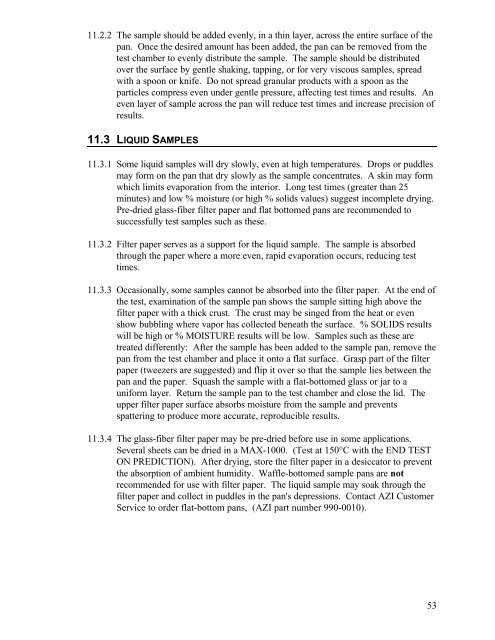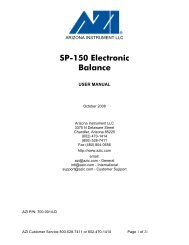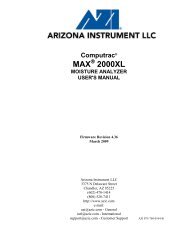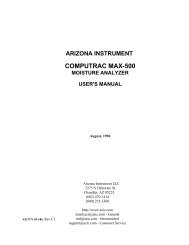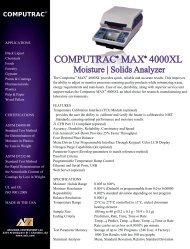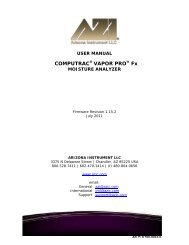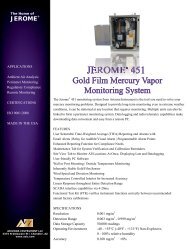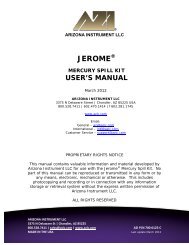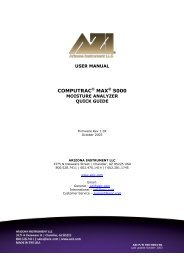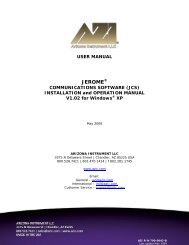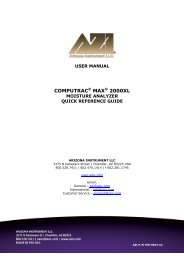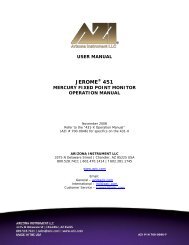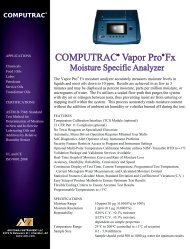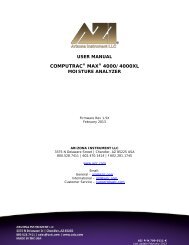Computrac MAX-1000 User's Manual - Arizona Instrument
Computrac MAX-1000 User's Manual - Arizona Instrument
Computrac MAX-1000 User's Manual - Arizona Instrument
You also want an ePaper? Increase the reach of your titles
YUMPU automatically turns print PDFs into web optimized ePapers that Google loves.
11.2.2 The sample should be added evenly, in a thin layer, across the entire surface of thepan. Once the desired amount has been added, the pan can be removed from thetest chamber to evenly distribute the sample. The sample should be distributedover the surface by gentle shaking, tapping, or for very viscous samples, spreadwith a spoon or knife. Do not spread granular products with a spoon as theparticles compress even under gentle pressure, affecting test times and results. Aneven layer of sample across the pan will reduce test times and increase precision ofresults.11.3 LIQUID SAMPLES11.3.1 Some liquid samples will dry slowly, even at high temperatures. Drops or puddlesmay form on the pan that dry slowly as the sample concentrates. A skin may formwhich limits evaporation from the interior. Long test times (greater than 25minutes) and low % moisture (or high % solids values) suggest incomplete drying.Pre-dried glass-fiber filter paper and flat bottomed pans are recommended tosuccessfully test samples such as these.11.3.2 Filter paper serves as a support for the liquid sample. The sample is absorbedthrough the paper where a more even, rapid evaporation occurs, reducing testtimes.11.3.3 Occasionally, some samples cannot be absorbed into the filter paper. At the end ofthe test, examination of the sample pan shows the sample sitting high above thefilter paper with a thick crust. The crust may be singed from the heat or evenshow bubbling where vapor has collected beneath the surface. % SOLIDS resultswill be high or % MOISTURE results will be low. Samples such as these aretreated differently: After the sample has been added to the sample pan, remove thepan from the test chamber and place it onto a flat surface. Grasp part of the filterpaper (tweezers are suggested) and flip it over so that the sample lies between thepan and the paper. Squash the sample with a flat-bottomed glass or jar to auniform layer. Return the sample pan to the test chamber and close the lid. Theupper filter paper surface absorbs moisture from the sample and preventsspattering to produce more accurate, reproducible results.11.3.4 The glass-fiber filter paper may be pre-dried before use in some applications.Several sheets can be dried in a <strong>MAX</strong>-<strong>1000</strong>. (Test at 150°C with the END TESTON PREDICTION). After drying, store the filter paper in a desiccator to preventthe absorption of ambient humidity. Waffle-bottomed sample pans are notrecommended for use with filter paper. The liquid sample may soak through thefilter paper and collect in puddles in the pan's depressions. Contact AZI CustomerService to order flat-bottom pans, (AZI part number 990-0010).53


